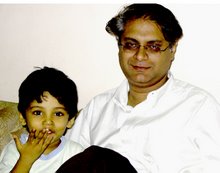Mission -"Primary Education"
This post is a sequel to my previous post on Education and Resurgence of India (30 Jan 2007) . In the post of 30th Jan , I referred to the two key pillars of the education ecosystem (Rote Learning and the Examination System) . The objective of that post was to highlight the impact of these two pillars in the overall development of talent in our country .In this post I make some more assumptions and draw your attention to some key metrics to track the efficiency of the overall spend on education
My assumptions are:
1. India is in the process of transforming itself into a developed nation by 2020 , yet we have 350 million people who need literacy and many more who have to acquire employable skills to suit the emerging modern India and the globe
2. Children who belong to weaker sections of our society are undernourished, and only a small percentage of them manage to complete 8 years of satisfactory education
3. Unequal access to educational resources still exists due to a variety of socio-economic reasons
It would be wrong to say that successive governments have done precious little for the cause of Mission Education since our independence. The budgetary allocations to the cause of education has steadily increased over successive Union Budgets…..however 35% of our adult population is still illiterate. Today our expenditure on education is somewhere in the range of 5% of our GDP, a good question to ask “Is it good enough?”
I am trying to leave you with some metrics to evaluate the efficacy of the spend on education and ,who knows with the Right To Information Act (RTI) , one of you could actually hold the Union Minister and his colleagues accountable to these metrics
Amount spent in investments in the following processes for primary education as an overall % of the budgetary allocation on education :
a) Revamp of primary education curriculum to teach ‘Life Skills” as against learning by rote .
b) Introduction of “Technology Enhanced Education” –setting the hardware in place
c) Examination Reforms (Are we testing for the ability to memorize, as against the ability to conceptualize and innovate ?)
d) Empowering the backward classes with educational incentives at the primary school level (as against trying to give subsidies in the form of reservations…)
These metrics are indicative, but if somebody could do a detailed analysis of the ratios, it would probably be apparent that the investments may not be happening in the right places .


2 comments:
I am delighted to see your interest in use of RTI in the field of education. I have recently posted two messages in the yahoo group rti4ngo: (i) Number 220: Use of RTI for demanding better services from the Education Department and (ii) Number 232:RTI for improving public education. Kindly join yahoo group rti4ngo and post your comments.
Dhirendra Krishna IA&AS (Retired)
Excellent points to consider.
This is my take on the evaluation system.
http://savekerala.blogspot.com/2006/08/towards-better-system-of-scholastic.html
And on whether we are teaching students to learn
http://desicritics.org/2007/02/12/140237.php
Post a Comment